Check received data
Receive user data
When receiving server-side events. You can check in the preview that the event data contains the user_data parameter.
In the GTM Server preview, go to the Event data tab.
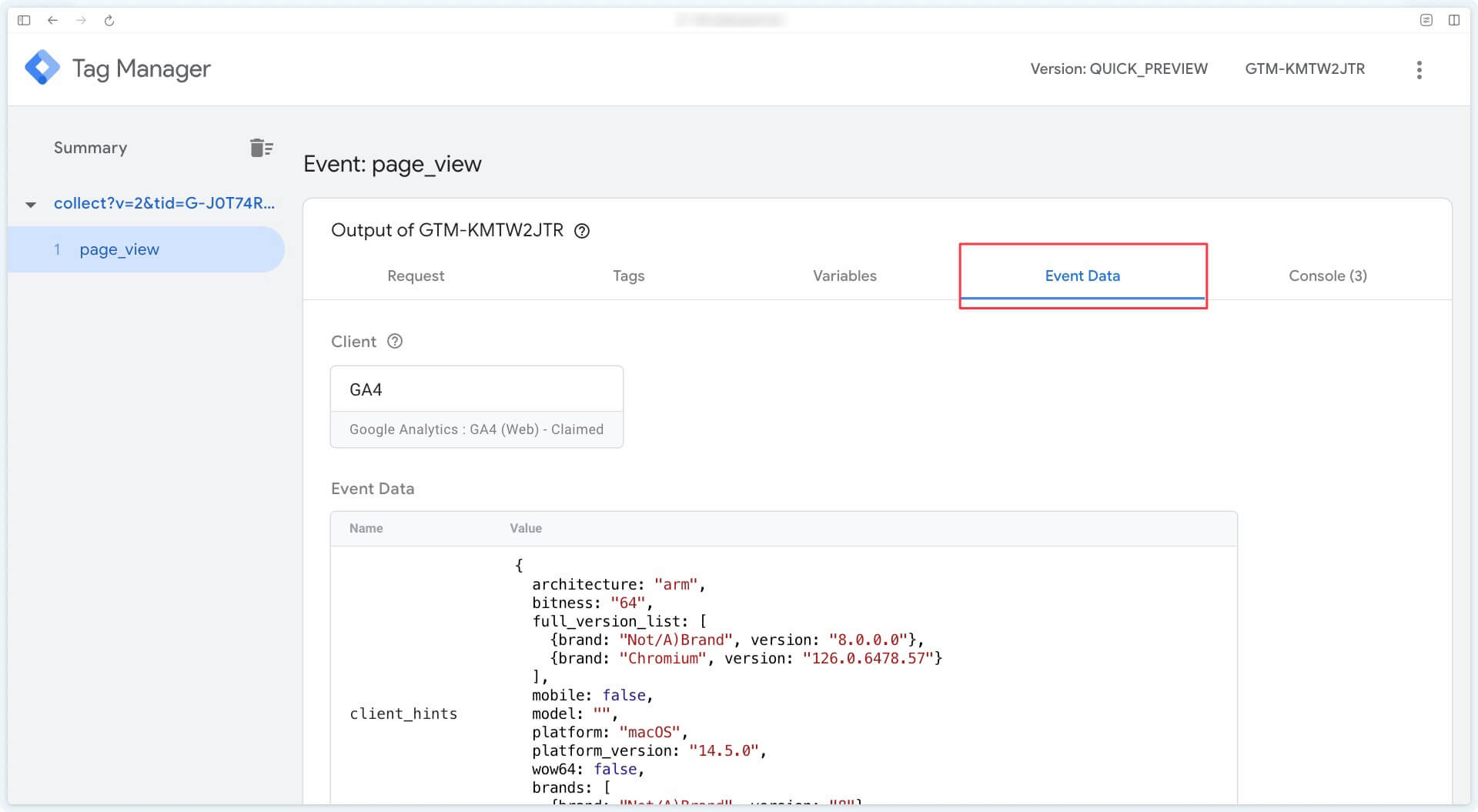
The parameters are listed in alphabetical order, so you’ll have to scroll down the page a little to see the user_data parameter appear.
Option 1: Event parameters
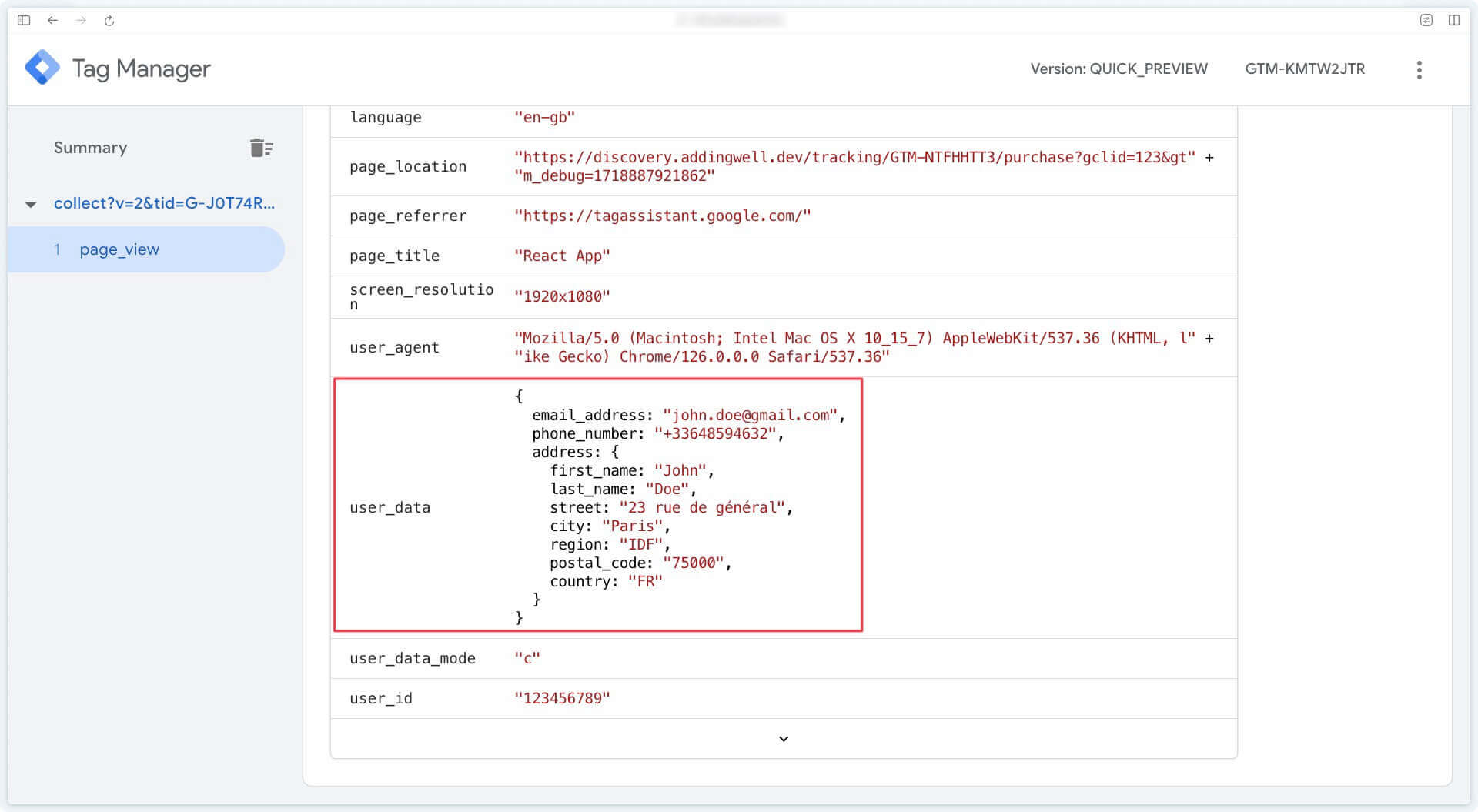
Option 2: User-Provided Data variable
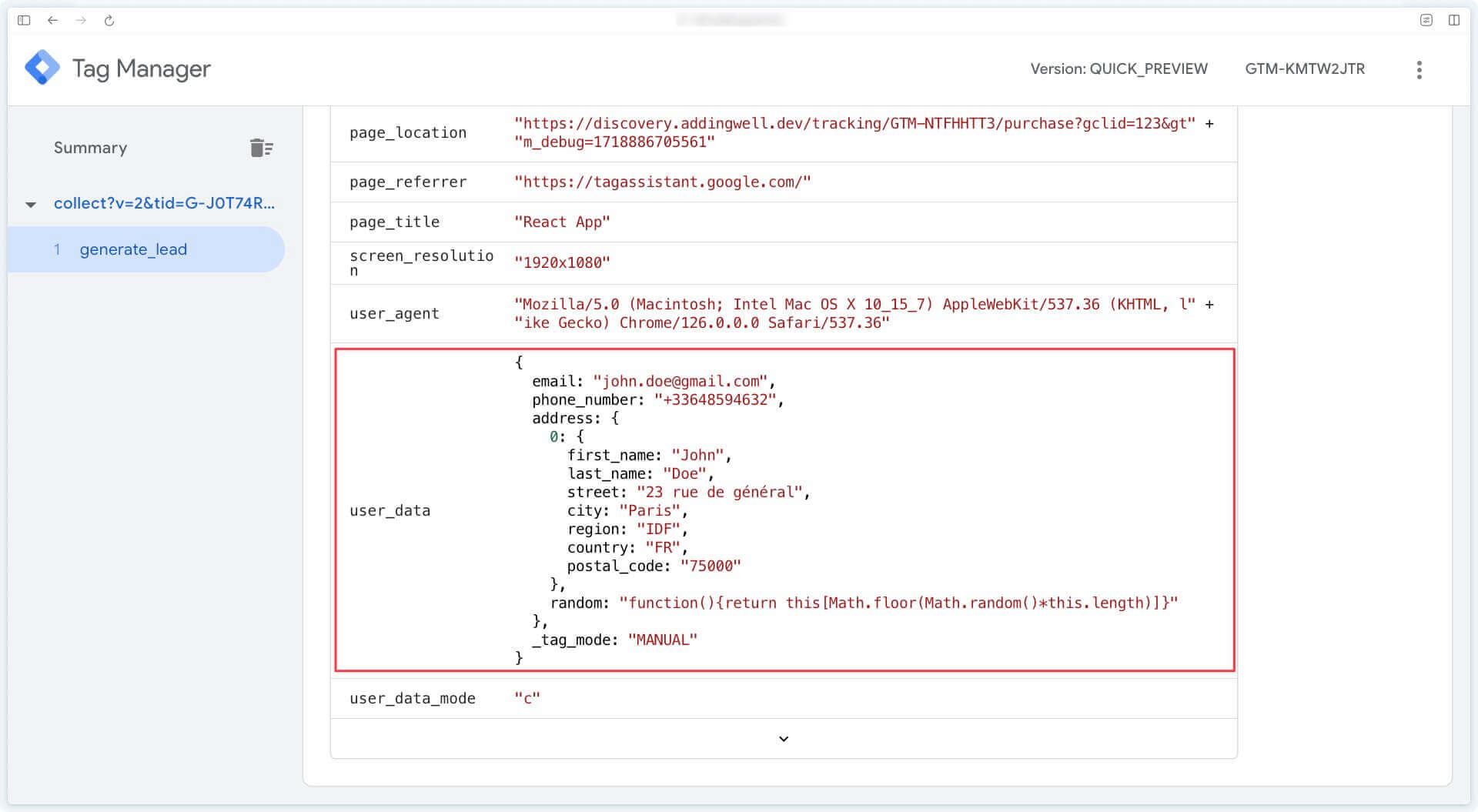
Checking from Addingwell’s Events Monitoring
In the Events Monitoring section of your Addingwell interface, you’ll find several key insights to ensure your user data collection aligns with your business needs and legal requirements.
Parameters Sent in Your Events
In Events Monitoring, you can view all the parameters attached to the events hitting your server. This is an opportunity to verify whether the data received matches what you intended to send — especially regarding user data.
If you notice that you’re sending too much data, or not enough, you can adjust your GTM Web configuration accordingly.
Start by clicking on Events Monitoring in Addingwell.
Then, select the event for which you’d like to check whether user data is correctly received. In our example, we’ll check the data sent with the purchase event by clicking on the event name.
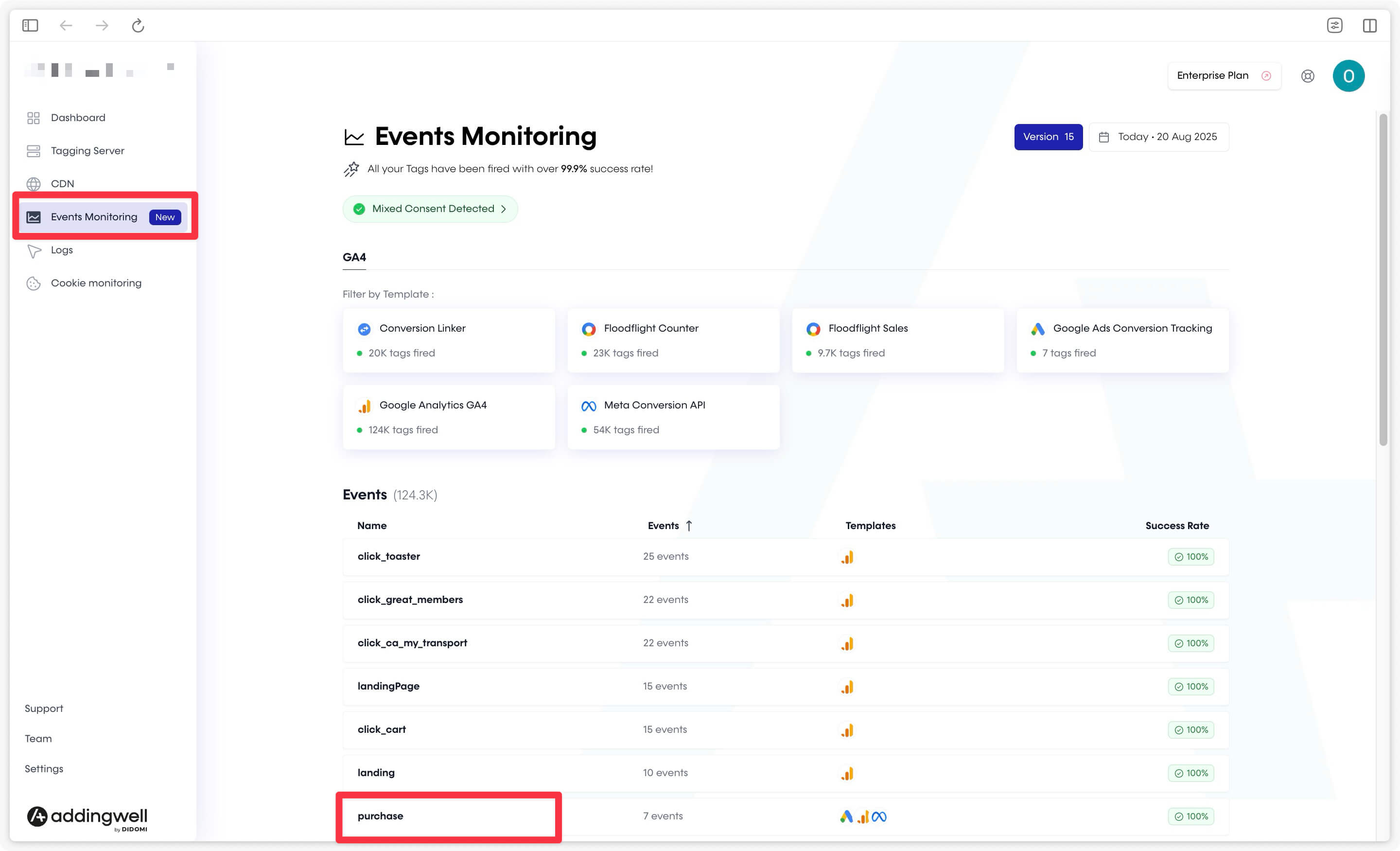
User Data Within the Event Parameters
After clicking on the purchase event, all parameters received server-side for that event will appear. If you correctly formatted your user data in your GTM Web, they will be grouped in a dedicated section: User-Data.
That is the case with our purchase event — here we can see the list of associated user data, including user_data.sha256_email_address.
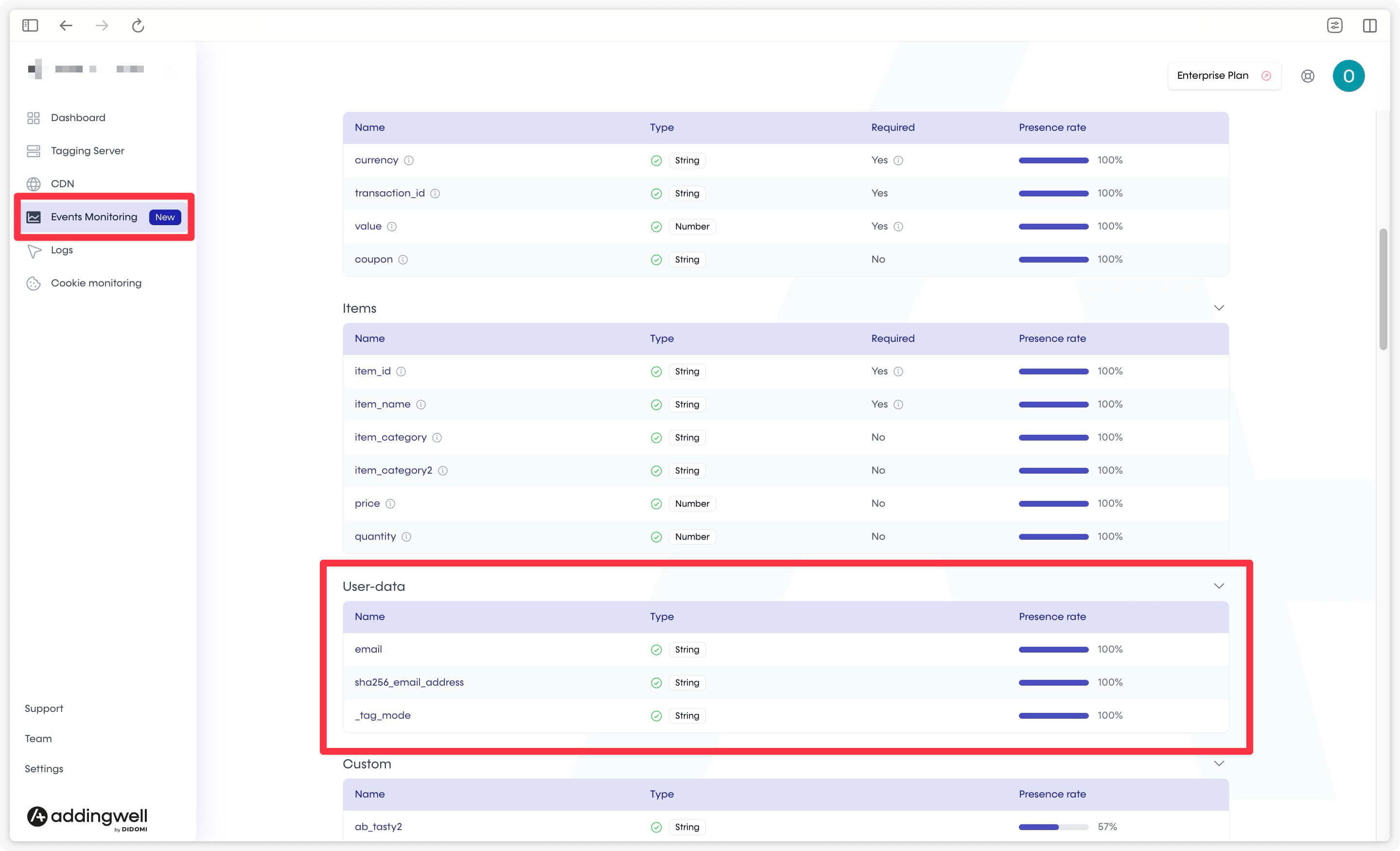
Presence Rate of User Data
For each user data field, you can check its presence rate for a specific event.
In our example, the email address sent through the user_data.sha256_email_address parameter is present in 100% of purchase events received by the server. This is the expected presence rate, since all users are required to provide their email before finalizing a purchase.
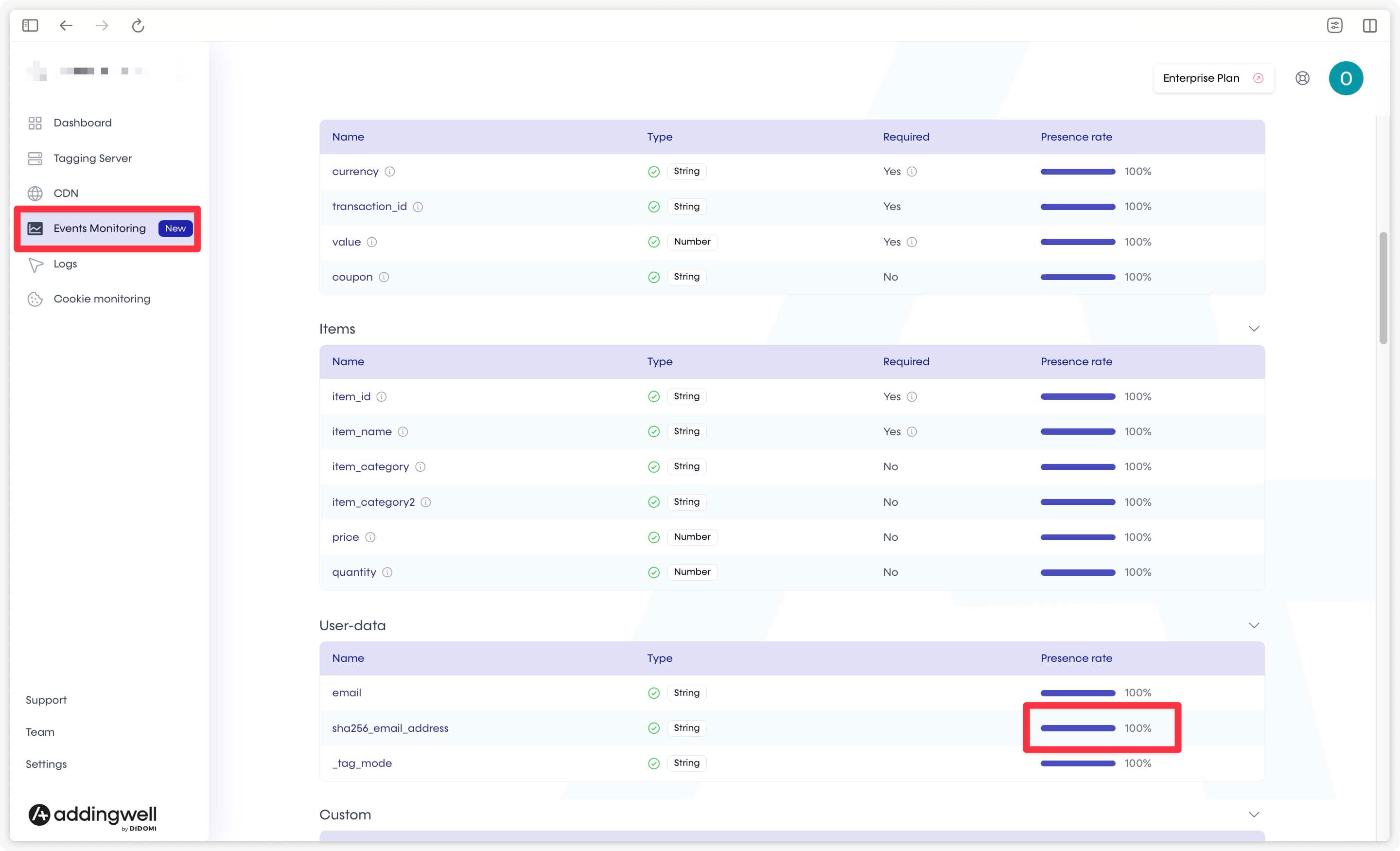
However, it’s completely normal for the email address not to appear in 100% of events other than purchase, since the user might not be logged in, or hasn’t yet provided their email prior to completing the purchase process.
Note that this check looks at whether the parameter is present in the GA4 event request — independently of whether a value is actually attached to it.
Congratulations
Congratulations, you’ve now sent user data to your server and you know how to monitor it.